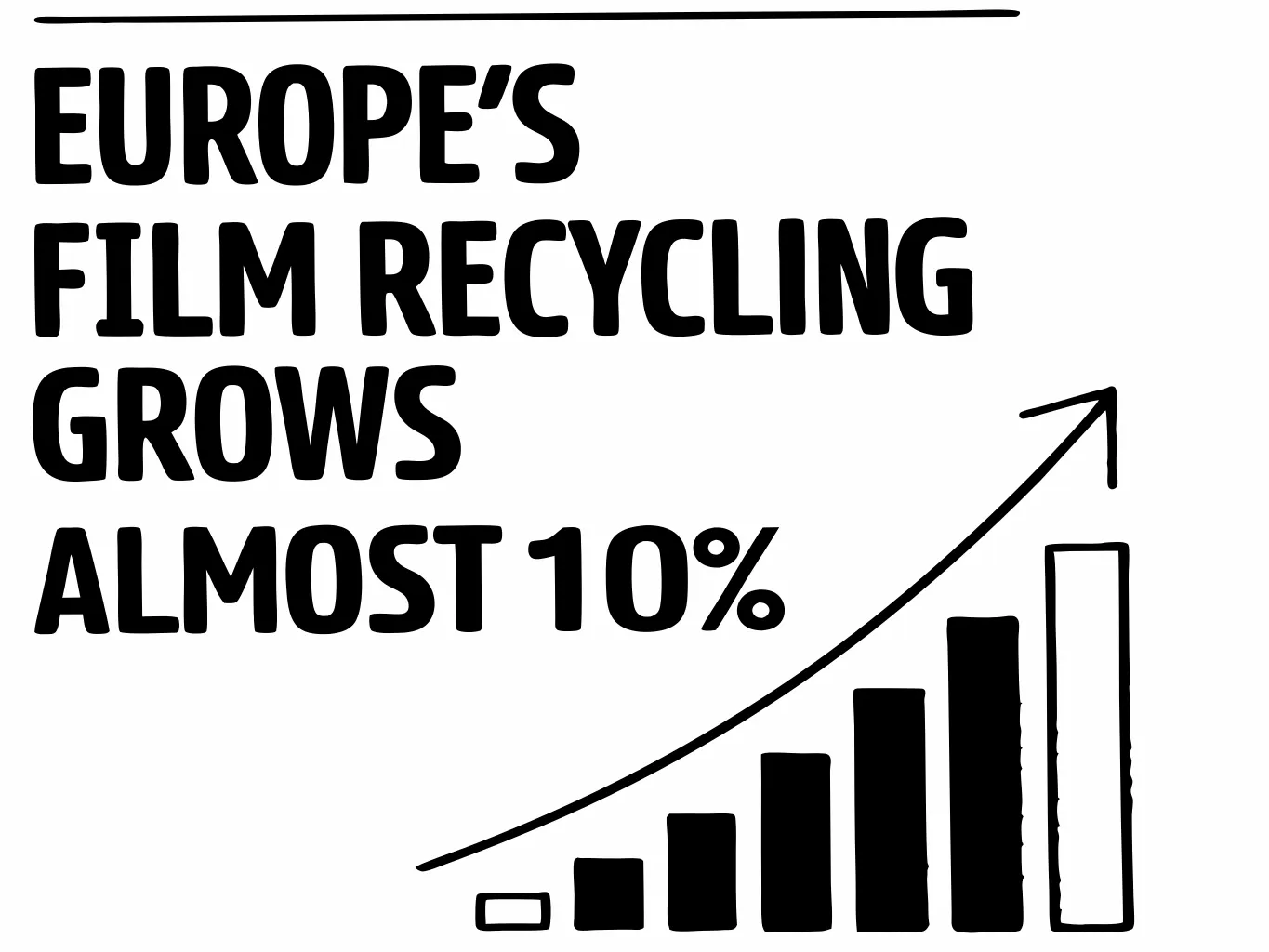Despite the significant disruptions in waste management due to the COVID-19 pandemic, Europe’s recycling capacity for flexible film surged by nearly 10% in 2020. According to Plastics Recyclers Europe, this growth highlights the region’s leadership in mechanical film recycling and its commitment to advancing a circular economy.
Flexible Film Recycling: A Growing Success
In 2020, 30 new recycling facilities were added, bringing the total to 2018 facilities with a combined recycling capacity of 2.7 million metric tons of polyethylene (PE) film. This is a significant achievement considering linear low-density polyethylene (LLDPE) and low-density polyethylene (LDPE) are the second-largest plastic fraction in the EU market, with an annual demand of over 9 million tonnes.
This demand underscores the potential for robust recycling systems. Today, 17% of recycled flexible PE is reprocessed into film-to-film applications, with key sectors such as non-food packaging and building materials driving adoption. By 2030, recycled content in PE film products could rise to 38%, indicating a promising trajectory for sustainable plastic use.
Advancing Closed-Loop Recycling
Flexible polyethylene waste, once considered difficult to recycle, has become a successful business model, thanks to advancements in collection, sorting, and recycling technologies. Ton Emans, President of Plastics Recyclers Europe, emphasized that closed-loop recycling—where materials return to their original applications—places Europe at the forefront of this transformative process.
However, challenges remain. Multi-layer and multi-material products, which deviate from the Design for Recycling principles, pose significant hurdles for high-end applications. Addressing these issues will be critical to expanding the circular economy.
Positive Trends Driving Growth
Several key trends are bolstering the growth of flexible plastic recycling:
- Extended collection programs: Enhanced systems across the EU are increasing the collection of household flexible plastic film.
- Improved sorting technologies: These enable better separation of mono-material streams, reducing mixed polyolefin fractions.
- Rising demand for recycled flexible PE: As companies across the value chain commit to incorporating recycled plastics into their products, high-quality recyclates are becoming essential.
Challenges and Industry Focus
Despite these advancements, the industry must avoid short-term fixes that undermine the circular economy’s principles. For instance, the Quality Recycling Process developed by Ceflex, which allocates only 20% of recycled film to film applications and 80% to injection molding, is seen as a step backward. Emans stressed that such processes are neither profitable nor sustainable.
The industry must prioritize optimizing current processes to produce the highest quality recycled materials. By focusing on high-performance solutions, the sector can ensure recycled materials are reintegrated into film applications, strengthening the circular economy.
The Path Forward for Flexible Film Recycling
Europe’s continued leadership in flexible film recycling hinges on long-term strategies and investments in advanced technologies. The focus on closed-loop recycling and adherence to circular economy principles will help the industry tackle challenges while maintaining its momentum toward sustainability.



